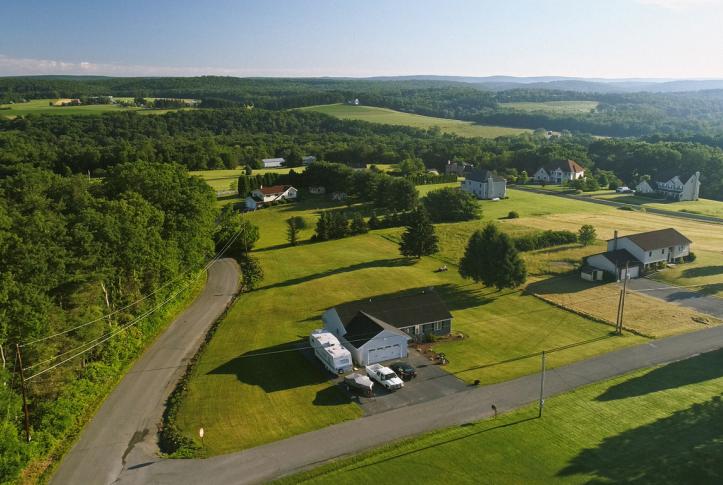Decades ago, while in high school, I landed a job as a nurse’s aide in a small hospital in my rural North Dakota hometown. I was dazzled — not by the technology in use (because there wasn’t much of it), but by the personal, compassionate care given to every patient.
In that hospital and many other rural hospitals, clinicians’ knowledge about patients wasn’t solely based on information in medical charts. Often staff knew where patients lived or farmed, and had met other members of their family. Planning during the hospitalization and for the patient’s discharge often incorporated various social determinants of health, long before this phrase became commonly used. In retrospect, I now see that the personal nature of health care in rural communities — still very much a part of rural health care today — has clear and unique value.
Leaders at the Commonwealth Fund recognized the crucial role of hospitals as anchors in their communities as far back as the 1920s, when the young foundation launched a major effort to build rural hospitals (at a time when more than half of U.S. counties, mainly rural and impoverished, lacked one). Later, it partnered with other philanthropies to document the gaps in the nation’s network of hospitals, work that eventually led to legislation mandating distribution of federal funds for hospital construction across the states.
Rural health care has changed a lot in recent decades. Most notably, many rural hospitals have decreased their inpatient beds, often in response to declining need, and expanded an array of other services such as offering “swing beds” (used for either acute or skilled nursing patients), outpatient primary care, and telehealth services. Through the Affordable Care Act, hundreds of rural communities have benefited from massive expansion of community health centers and the National Health Service Corps, which together have increased the number of rural primary care and behavioral health providers. Yet need still outstrips supply.
Telehealth applications that link patients and rural clinicians with expert advice or services not available locally have helped maintain access to care. In addition, nurse practitioners and physician assistants — professionals whose first training programs were supported by the Commonwealth Fund — have helped ensure access to needed care. New provider mixes and care delivery models can be found across the rural landscape. This adoption of such innovative approaches often occurs by necessity, given more limited resources in rural areas.
But in spite of these innovations, many rural health care providers and communities are struggling. For example, labor and delivery and other obstetric-related services have disappeared from many rural towns. And since 2010, 87 rural hospitals have closed, affecting access to care and triggering employment and associated health insurance losses. These hospital closures are overwhelmingly occurring in states that have not expanded Medicaid.
Sustaining and developing new access points for prioritized population health and health care services should be a top priority, given the high levels of need in rural communities. Compared with other regions, rural communities have higher proportions of elderly residents, higher rates of uninsured residents, greater burden of chronic diseases, and higher rates of poverty.
Rural America also needs next-generation care models that incorporate disease prevention and chronic disease management and attend to the social determinants of health, particularly food insecurity and transportation challenges, which are common in rural areas. As these efforts proceed, health care providers, payers, and policymakers should consider the following key issues:
- Payment policy. It is important to test new payment approaches tailored to rural circumstances, such as the Pennsylvania Rural Health Model, which uses an all-payer global budget. More broadly, we need to ensure that proposed changes in payment policies are explicitly assessed for their potential impact on rural providers. For example, alternative payment models advanced by the Centers for Medicare and Medicaid Services, such as downside-risk models (in which providers refund payers if health care costs exceed a benchmark), can be particularly threatening to rural providers operating with very thin margins.
- Reshaping health care delivery. New service models should focus on improving health from within and beyond the bricks and mortar of traditional health care, with attention given to social determinants of health as well as strong primary care and population-based efforts. For example in New Mexico, Medicaid managed care plans are partnering with clinics to deploy community health workers to support high-risk patients and promote community health.
- Health workforce. Greater support of health professions programs that field large numbers of graduates to rural areas is needed, along with support for pilots of new recruitment and retention strategies that build on what’s worked, such as tailored rural curricula and recruitment of students from rural areas. Reimbursement flexibility is likewise needed for staffing models that incorporate team members such as community health workers.
- Partnerships. Because of resource constraints, partnerships are an established way of doing business in rural communities. For rural health providers, partnerships with universities, for example, can leverage expertise in areas like data analytics and integrating social services. It’s important such partnerships are truly collaborative, rather than paternalistic.
- Research. Health studies with aggregated data can inadvertently mask important rural and urban differences. Federal agencies and others should make it standard practice to identify rural characteristics within data analyses. For example, the Centers for Disease Control and Prevention has crafted data visualization tools that show sizable and increasing rural–urban disparities around leading causes of avoidable death.
The Commonwealth Fund’s 100-year history includes important efforts that expanded access to care in rural communities and strengthened programs such as Medicaid that are rural lifelines. Going forward, 21st-century health care solutions, grounded in evidence and innovation, should reflect both the unique strengths and emerging challenges of rural America.

